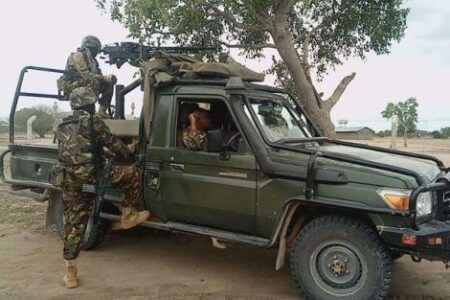
Shabaab violence, impunity putting Somalia media freedom at risk
Militant group Al-Shabaab is still the biggest violator of media freedom in Somalia, even as the safety of journalists is also at the mercy of some government administrators acting with impunity.
Findings from the latest Annual State of Media Freedom Report in Somalia show that at least two journalists were killed last year, six others injured in their line of duty and several others arrested, illegally detained or tortured for doing their work.
And as with most of the cases in the past, these two deaths were attributed to Al-Shabaab violence. They died in separate explosions mounted by the militant group. Al-Shabaab also caused serious injuries to five journalists who were caught up in their attacks. In most cases, these journalists were attacked for their critical reporting on the group.
But according to the report, the threats against media freedom are not exclusive to Al-Shabaab militants. The “high degree” of impunity, it says, shielded some government officials both in the federal member states and the federal government levels to get away with violations against journalists as there has been little law enforcement against attacks on journalists.
The Nusoj annual report
“Somalia has brilliant and brave journalists but, equally, there are dangerous and deadly forces that will seize any opportunity to throw journalists into jail, inflict violence and force them to comply with illegal orders. Some reporters end up paying the ultimate price for their service to society,” said Faruk Osman, the secretary-general of the National Union of Somali Journalists (Nusoj), a local media freedom lobby that produces the annual report.
Osman further stated that in a country where journalists are killed and injured, where the right to access public information remains elusive and where female journalists feel threatened both in and outside the newsroom, there is an urgent need for duty-bearers to end the ongoing atrocities and make journalism safe.
This year’s edition titled “Clear and Present Danger: Somali Journalists Face Persistent Internal and External Threats to Media Freedom”, confirmed Somalia’s enduring problem with press freedom, where at least one journalist was threatened, attacked or even killed every year.
An earlier finding by the Reporters Without Borders (RSF) had, however, showed that Somalia’s media ranking had slightly improved in Covid-19 years, rising from 161 out of 180 countries polled in 2021 to 140 out of 180 in 2022.
But Nusoj found that violations against female journalists are still prevalent and at least 28 female journalists reported cases of sexual and gender-based violence while in the line of duty. It indicated the problem of online bullies, saying that journalists were subjected to threats of rape and online harassment, often channelled through their social media accounts.
It was thought that the reported cases of sexual and gender-based violence represented a small fraction of the true figure since the fear of public censure deterred women from speaking out or taking their complaints to the authorities.
In the entire country, at least 95 attacks on media outlets and journalists were recorded in 2022. These attacks often included arrests, torture, threats of violence, sexual harassment, confiscation of equipment or travel bans. Some 56 journalists were arrested, including 24 detained in Somaliland region, the self-declared breakaway republic which is yet to be internationally recognised. Most of those arrested were freed without charge, having been held for several days or even weeks, which is a violation of their rights.
One journalist was seriously wounded by the police in Mogadishu.
That means that while journalists are arrested for committing crimes and brought before civilian courts, these may not necessarily count as violations. Also, they could raise concerns if specific laws are used to specifically harass journalists. In Somalia, however, journalists are sometimes taken to military courts.
Amended media law
Somalia recently amended the Media law, for example. But Nusoj says some of the provisions have been used by authorities to target journalists. When Somalia recently announced restrictions on covering Al-Shabaab narratives, the directive was criticised for lacking clarity on what should or should not be covered.
Some of the language used in the press release was too vague to serve as a basis for applying the law in an even-handed and fair manner. For example, terms such as “extremist ideology” and “terrorist messages” are unclear and could be used for political purposes. In this context, it would be more normal to employ terminology such as “incitement to terrorism” or “incitement to violence” which infer that the message intends to incite others and may already have had this effect.
Source: ghanaweb





